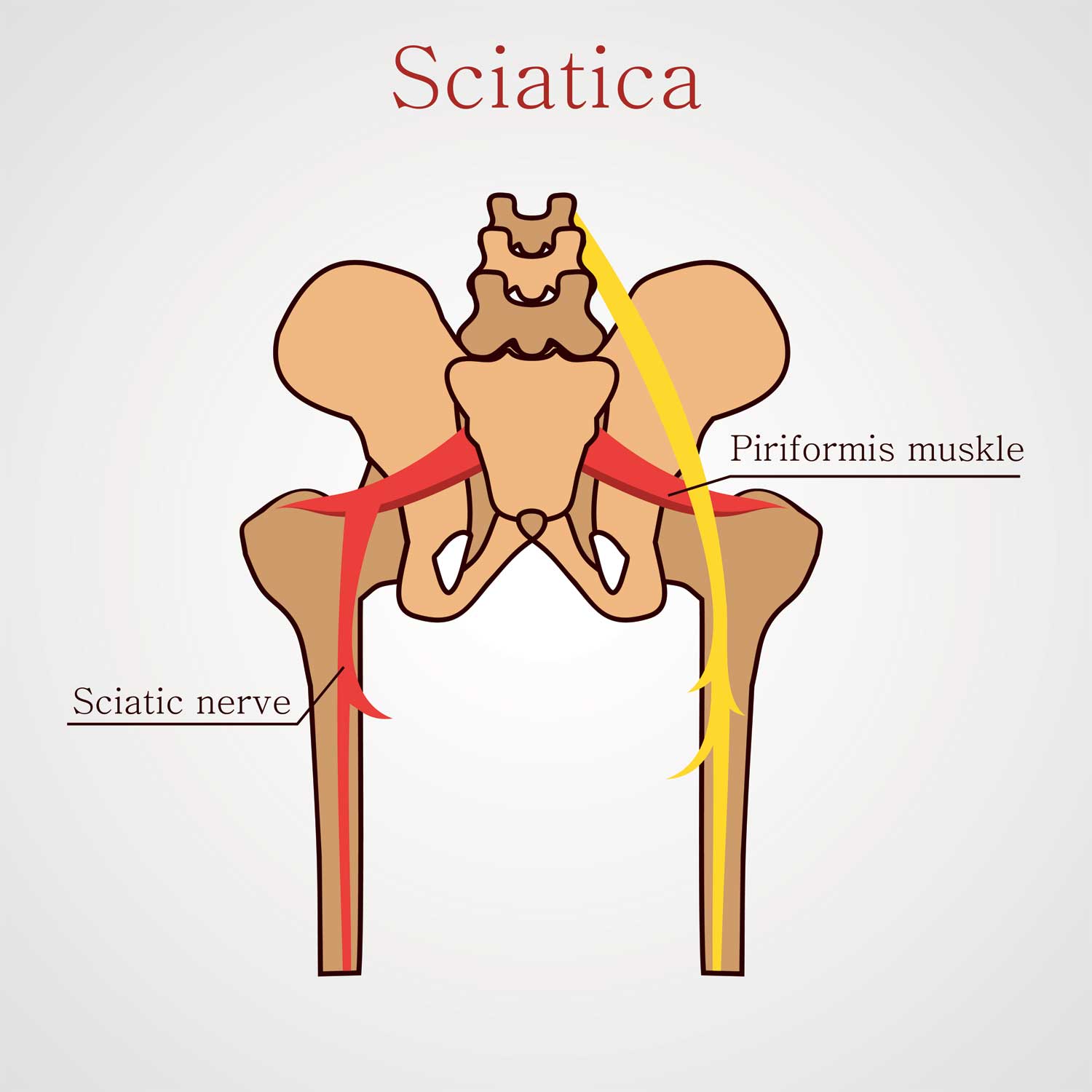Running from the lower spine to back of the thigh and calf, before ending at the feet, the sciatic nerve is the largest and longest single nerve in the body. Its main function is to supply sensation and strength to the lower leg by connecting the foot and leg muscles to the spinal cord.
Any pain, irritation or neurological symptoms that affect the sciatic nerve is known as sciatica. Sciatica in itself is not an illness, but rather a symptom of an underlying condition that causes nerve compression, such as a herniated disc, lumbar spinal stenosis, spondylolisthesis and degenerative disc disease. Just as a "headache” is a symptom, it could be due to many other underlying causes.

There are various probable causes of sciatica. Injury, infection, or any other condition that aggravates the sciatic nerve can trigger sciatica. Here are some of the other common causes:
Sciatica usually shows symptoms that affect the buttocks and legs more than the back. It usually occurs abruptly and may last for a few days or weeks. Here are some possible symptoms of sciatica:
The intensity of pain may vary from mild to severe. Sometimes, coughing, sneezing or long period of sitting may worsen the indications.
Sciatica can already be validated through the symptoms alone, but tests are still needed in order to determine which treatment will alleviate symptoms and treat the underlying condition. Here are some ways on how to diagnose sciatica:
Physical Exam
The doctor will usually ask where the pain is and when/how did it start. For the physical exam, the doctor may ask you to walk on your toes, stand from a squatting position, or even lift your leg in a straight position.
Imaging Tests
This is usually done when the pain is severe. These tests are used to determine the cause of sciatica, and thereby the method of treatment. The imaging tests may include MRI, Spinal X-Ray, CT Scan and Electromyography (EMG), depending on the doctor's examination and suspicion. He will recommend the most appropriate imaging modality.
Sciatica is mostly experienced by people who are between ages 30 to 50. Women who are pregnant are also prone to sciatica. Here are other risk factors for sciatica:
Sciatica can recur. However, the risk of sciatica can be reduced or prevented by doing the following:
Typically, sciatica can be alleviated with a combination of rest and home-based remedies like hot or cold compresses. Over-the-counter pain relievers and nonsteroidal anti-inflammatory drugs (NSAIDs) such as aspirin and ibuprofen may also be taken to manage mild to moderate pain. For severe sciatica pain, doctors may prescribe stronger muscle relaxants and steroid/anti-inflammatory injections.
Lifestyle modifications are also advised either to alleviate symptoms of sciatica or prevent it altogether. See the [Sciatica Prevention] section above.
Most cases of sciatica pain are usually treated with non-surgical treatments. However, when the symptoms of sciatica worsen, it may require surgical treatment.
There are different surgical treatments for sciatica, depending on its cause and severity:
Microdiscectomy
Laminectomy
Nucleoplasty
Physiotherapy may be recommended afterwards to strengthen the lower back muscles and promote faster recovery.
If symptoms persist even with medication, rest and stretches, medical attention is advised. A thorough assessment of these symptoms can help determine the cause and treatment of sciatica. Seek medical attention at the onset of the following:
While rare, some cases of sciatica, particularly those accompanied with severe pain and dysfunction, require surgical intervention.
Accredited at all Parkway Group Hospitals, Dr Chua Soo Yong is a well-established orthopaedic and spine surgeon in Singapore who specializes in complex spinal surgery for the treatment of sciatica, lumbar stenosis and herniated discs, among others. His services at Atlas Orthopaedic Group include decompression surgery, spinal fusion and disc replacement. To schedule an appointment with Dr. Chua Soo Yong, call 6262-0555 or email drchua@aog.com.sg.